Overview of Takashima City
Takashima City is located in the west side of Lake Biwa, Japan’s largest freshwater lake and one of the world’s oldest lakes. The city was born on the 1st of January 2005 as a result of the merger among six neighboring municipalities: Makino town, Imazu town, Kutsuki village, Adogawa town, Takashima town, and Shin-asahi town.
Since ancient times, this area, being on the way that connects Hokuriku region
(central part of Honshu facing the Sea of Japan) and Kyoto/Nara region (the then-capital), has flourished as an important traffic point. The Nishi-omiji Road and the Wakasa-kaido Road known as the Saba-kaido Road took a main role in the field of surface transport.
The Nishi-omiji Road runs at the foot of Mt. Hiei and Mt. Hira along the lakeshore.
The Saba-kaido Road was named after “Saba” (mackerel) since salted mackerel used to be transported from the seaside to the capital taking this road. Water transportation on Lake Biwa was also available between Takashima and Otsu, therefore this area served as an important transportation hub at that time.
Being located close to the Sea of Japan, we have severe winter with a lot of snowfalls.
In autumn, we often have scattered showers known as “Takashima Shigure.”
Toju Nakae, a founder of Japan’s Yomeigaku School who lived in the 17th century, was born in Takashima. Because of his intelligence, he has been renowned as “Omi Seijin” and gathered people’s respect. The city also turned out many merchants so-called “Takashima Shonin” or “Omi Shonin.”
Mayor Mr.Katsunobu Imaki
| Population | Households |
|---|---|
| 53,950 | 17,302 |
| Age | ~14 | 15~64 | 65~ |
|---|---|---|---|
| Population | 7,651 | 32,782 | 13,517 |
| Percentage | (14.2) | (60.8) | (25.1) |
| Primary Industry |
Secondary Industry |
Tertiary Industry |
Total | |
|---|---|---|---|---|
| Employed Persons | 2,050 | 8,897 | 15,574 | 26,521 |
| Percentage | (7.7) | (33.5) | (58.7) | (100.0) |
The City Name “Takashima”
Before the merger, this area was called “Takashima-gun”; a group of above mentioned six municipalities.
It is said that the name, “Takashima,” has been existed since as early as the 8th century.
As an evidence of this theory, you can find the name mentioned in some classic literary works such as “Manyo-shu” and “Wamyo-sho” written in that period.
Specialties
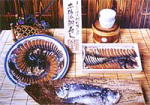
Funasushi, fermented sushi with crucian carp, is the forerunner of modern sushi. Because of its unique flavor, this local delicacy is often compared to blue cheese. Made by pickling crucian carp with Omi Rice, the preserved food produce a delicate flavor.
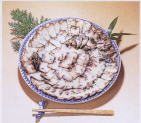
Saba no Narezushi, fermented sushi with mackerel, is made in the same way as that of Funasushi’s.
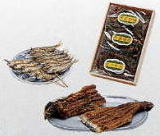
Lake Fish Specialities such as Ame-ni and Tsukuda-ni are preserved foods made by simmering fish in a broth of soy sauce, Mirin (sweet sake), and sugar. Sweet-simmered clams and small fish from Lake Biwa such as sweet fish, roach, crucian are quite popular.
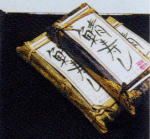
Sabazushi, sushi with mackerel, is made by pressing a piece of mackerel in a mould over rice.
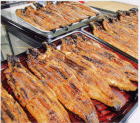
Unagi no Kabayaki, broiled eel, is cooked over hot coals and brushed with a rich sauce of soy sauce and sake.
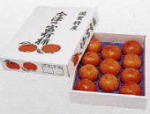
Our locally grown Fuyugaki (persimmon) is famous for its vivid orange color and sweetness. It is picked in late autumn.

A variety of processed foods such as Bread and Gelato are made from fresh milk and other local ingredients.
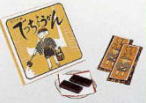
Detch-yokan: sweet read bean jelly
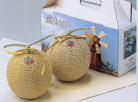
Fusha Melon: local melon named after the giant windmill in the Windmill Village
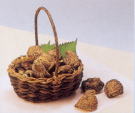
Shiitake Mushroom: dark brown mushroom original to Japan
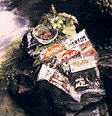
Edible Wild Plants Specialties: pickled bracken, Japanese rose, and some other wild plants from the mountain
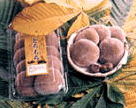
Tochimochi: rice cake with horse chestnut powder
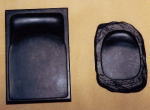
Takashima Kohan-seki Suzuri: Handmade ink stone made of local stripe patterned stone
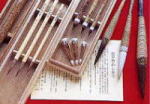
Umpei-fude: hand-made Japanese writing brush for calligraphy

Senkotsu: fan ribs for Japanese fans
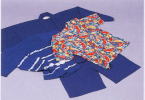
Takashima Chijimi, cotton-made crepe, has been widely weaved in this area since the 1920s. Making use of a weaving technique refined over 80 years, some factories now weave strong fabric suitable for inner layers of car tires, escalator handrails, conveyer belts etc.
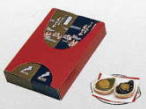
Zazenso Monaka: zazenso shaped wafer cake filled with red bean jam
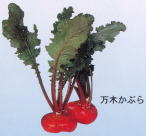
Yurugi Kabura: red colored turnip
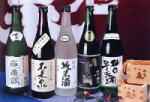
Natural water mixed with quality rice harvested here turn into various kinds of Locally Brewed Sake.
Tourist Attractions
NATURE
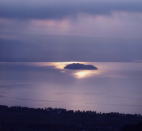
Lake Biwa, our “Mother Lake”, is the largest freshwater lake in Japan. It is also one of the most ancient lakes in the world ranking with Lake Baikal and Lake Tanganyika. Many indigenous wildlife can be observed here after a long process of evolution. Moreover, the water of Lake Biwa is utilized for drinking by fourteen million people in the Kyoto-Osaka-Kobe metropolitan area.
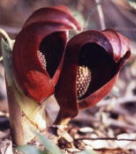
Zazenso looks like a Buddhist priest practicing zazen in a temple. The flower that blooms between the end of February and the middle of March shows us the coming of spring.
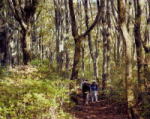
There remain a limited number of Primeval Beech Forests in Japan. Takashima has retained some of them as the way it used to be in the ancient time.
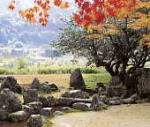
Leaves of the Ashikaga Garden on the Koshoji Temple premises beautifully turn red and yellow in autumn.

Shin-asahi Hana-shobu En is an iris garden in which 150 kinds of irises are planted. The total number of the flower goes up to 200,000. Each year the flowers bloom one after another and fascinate people with its beauty.
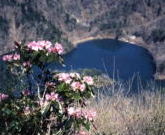
Lake Tankai was dug for irrigation in the early 20th century. The lake is surrounded by beautiful trees such as rhododendron and azalea. All these elements create incomparable scenery.
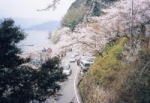
There are 600 cherry trees all along Kaizu Osaki Cliff for 4 kilometers. Many of them are more than 60 years old. They bloom in April all at a time and produce a tasteful atmosphere together with clear lake water and rocks floating on it.
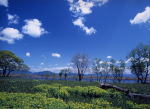
A Cluster of Urushi (Euphorbia adennochiora) stretches along the lakeshore.
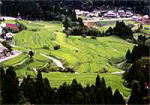
There are 356 Tanada, terraced paddy fields, spread out at the foot of Mt. Hira. Its vertical drop is 100 meters and each paddy is neatly separated with stone hedges. In autumn, the paddies are transformed into glowing golden expanses, and the rice is ready for harvest.
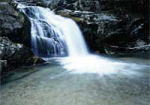
Yatsubuchi Falls have been chosen as one of the Japan’s 100 best waterfalls. The wild falls and fresh greens around them create a magnificent scene.
HISTORIC SITES
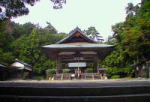
Oara-hiko Shrine was built in the first half of the 13th century. It is famous for Shichikawa Matsuri, an annual festival held in early May.
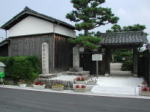
Toju Shoin is a private school established in the 17th century by Toju Nakae, the founder of the Yomeigaku school introduced from China.

Yomei-en is a Chinese garden made as a symbol of the friendship between former Adogawa town (now a part of Takashima city) and Yuyao city in China.
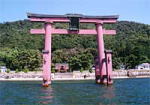
Shirahige Shrine is famous for its vermilion colored Torii, gateway at the entrance to a Shinto shrine, rising out in the lake.
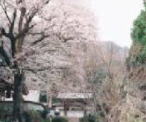
Sanami-dera Temple is an old temple founded by Gyoki, a Buddhist priest of the Shingon denomination in the 1st century.
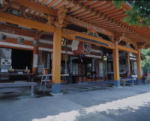
Osaki-dera Temple sits on the Kaizu-osaki cliff. The Buddha niched in the temple is believed to have mercy on worshipers’ souls.
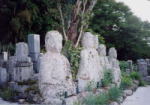
In Gyokusenji Temple, there is a group of stone-made images of Buddha carved between the 14th and the 16th century.
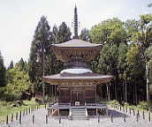
Taho Tower of Ninigi Shrine is a two-storied tower also known as “Okunoin.”
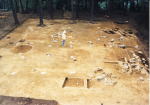
The Ruin of Shimizu-yama Castle makes us think of the age of war and samurai in the 16th century.
LEISURE
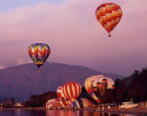
Every November, the Hot-air Balloon Race across Lake Biwa is taken place at Omi-shirahama, a beach in the southern part of Takashima city.
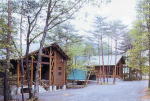
Green Park “Omoide no Mori” offers you chances to try a variety of outdoor sports and activities. You can also enjoy yourself in a hot spring there.

West Lake Rowing Competition is an exciting event in which crews on Chinese style boats challenge to their power and teamwork.

Makino Highland Hot Spring “Sarasa” has some kinds of baths that contain essences of locally picked fruits and flowers.
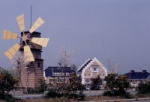
A giant windmill at the front gate welcomes you to Shin-asahi Windmill Village. You will have a lot of fun in the Dutch style park.
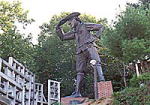
A 7 meter-tall statue of Gulliver look down on the playground of Gulliver Youth Retreat Village. This village consists of 5 wonderlands containing accommodations, camping sites, playground equipments and an observatory.
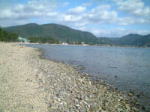
Makino Sunny Beach is proud of its purest water in the northern part of Lake Biwa. Swimming or camping there, you will feel as if you are in a South Pacific resort. This beach is suitable for families with children as the water is shallow over a large distance.

Village d’est Imazu is an outdoor park on the top of a mountain. There are lodges, camping site, restaurant, playground and some other facilities. You will be overwhelmed by the magnificent view of Lake Biwa from there.

There are many kinds of fruits and vegetables planted in Makino Pick Land. Visitors can pick pieces of seasonal fruits such as cherries, blueberries, grapes, apples, and chestnuts and take them back home.
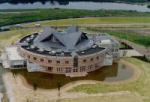
Lake Biwa Children’s Land is a prefectural park with playgrounds, accommodations and camping grounds. In summer, you can also go down the lake and enjoy swimming.
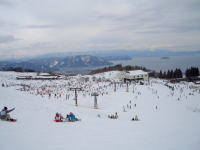
Hakodateyama is one of the best ski hills in western Japan. Ski and snowboard enthusiasts from Kansai region flock to the slopes in winter. Once the snow disappears, it turns to hiking and mountain biking tracks.
Direction of City Planning
“Takashima city — where the people interact and live in harmony with rich water and green”
-“Encourage the local talent and the culture”
-“Secure the sufficient social welfare services”
-“Establish the local key industries”
-“Realize the environment familiar with Lake Biwa and Satoyama”
(“Satoyama” stands for a unique ecosystem wherein man and nature live in balance.)
-“Gain the firm footing to support the local communities”
Municipal Offices
- Takashima City Hall 565 Kitabata, Shin-asahi-cho, Takashima-shi, Shiga 520-1592
- Takashima City Hall Annex 1-4-1 Nakoji, Imazu-cho, Takashima-shi, Shiga 520-1631
- Makino Office 1410 Sawa, Makino-cho, Takashima-shi, Shiga 520-1892
- Imazu Office 253 Hirokawa, Imazu-cho, Takashima-shi, Shiga 520-1692
- Kutsuki Office 604 Ichiba, Kutsuki-mura, Takashima-shi, Shiga 520-1492
- Adogawa Office 455 Tanaka, Adogawa-cho, Takashima-shi, Shiga 520-1292
- Takashima Office 215 Katsuno, Takashima-shi, Shiga 520-1192





























更新日:2025年02月13日